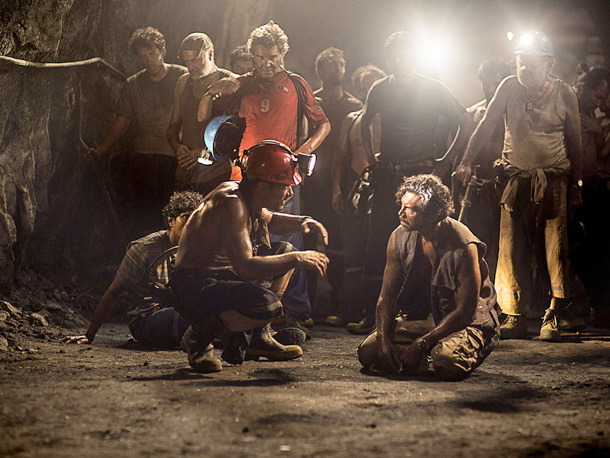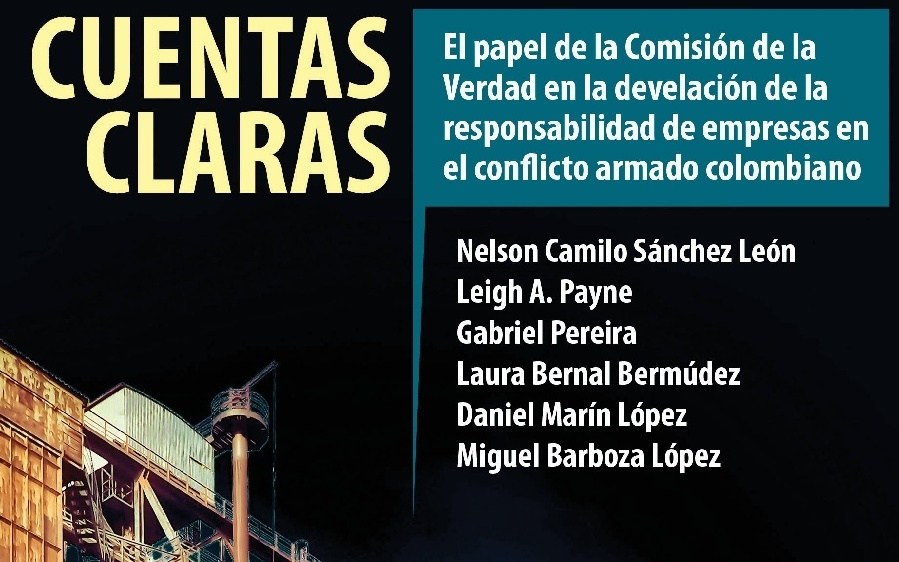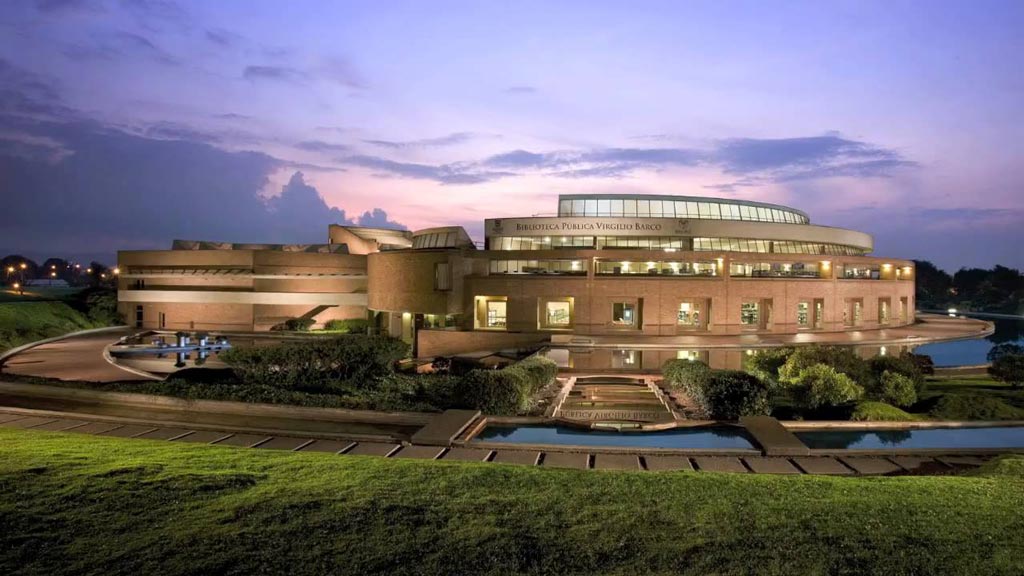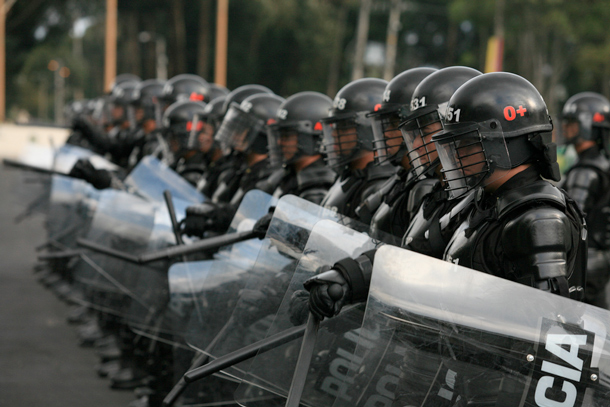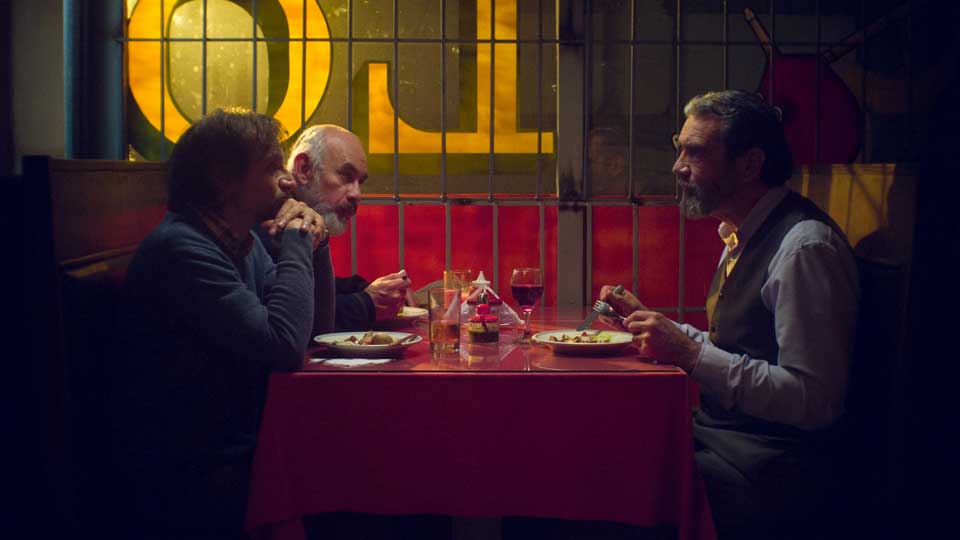
La defensa del dragón has already debuted to critical international acclaim.
An exclusive interview with Natalia Santa whose directorial debut, La defensa del dragón, will be in cinemas at the end of July and has already received widespread acclaim.
Natalia Santa is a scriptwriter turned director, whose remarkable debut feature La defensa del dragón is about to hit theatres on July 27. In a candid interview with The Bogotá Post, the director talked about the long and difficult process of making a movie in Colombia and how her fascination for some of Bogotá’s most unique spaces inspired her to make this film.
La defensa del dragón opens in theatres throughout the city on July 27. You can watch it at Cine Tonalá on the following dates:
Thursday, July 27 at 6.30pm
Friday, July 28 at 4.45pm
Saturday, July 29 at 2pm
Sunday, July 30 at 4.15pm
Monday, July 31 at 6.15pm
In conversation, Natalia Santa gives out a soothing vibe – her voice is soft and her tone is gentle. The fascinating sensitivity of her directing style comes through in her demeanour. In La defensa del dragón, she shows off her expertise as a scriptwriter and achieves a solid directorial debut. Within the first ten minutes of the film, the viewer gets a clear picture of the characters’ struggles and motivations, making it easy to care about them. And that’s how you know you’re seeing the work of a great writer; when you realise you care.
In this year’s Cannes Film Festival, La defensa del dragón was the only Latin American feature film selected to participate in the Directors’ Fortnight section, and Santa became the first female Colombian director to compete in the prestigious French event.
While set in modern Bogotá, parts of the film make the viewer wonder whether the story unfolds in present day or if it’s a period piece. And that’s intentional. A trio of men in their 50s, acquainted by their fondness of gambling, meet regularly at the iconic Lasker Chess Club which, in the words of the director, is one of many “spaces of the city centre that refuse to disappear and stay exactly the same as they were 40 years ago.”
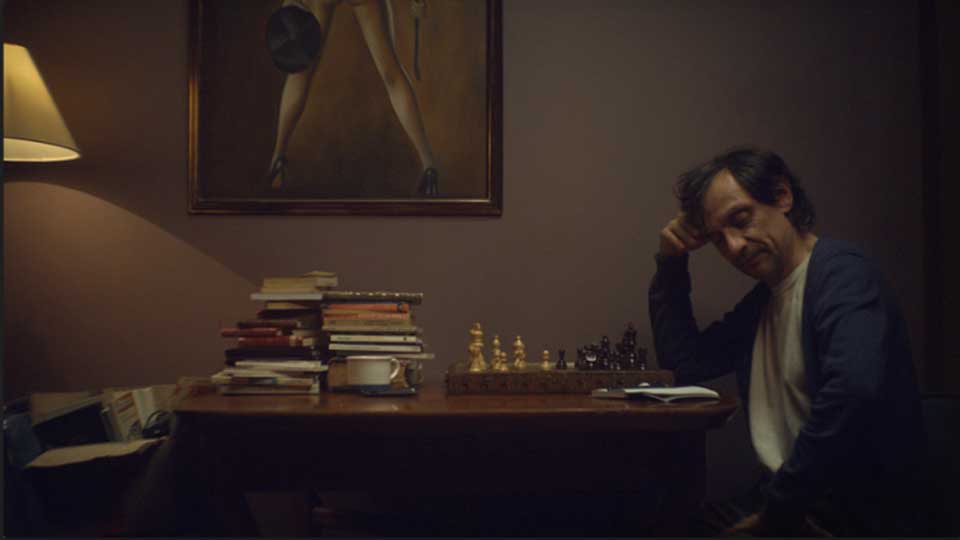
Samuel, played by Gonzalo Sagarmínaga in La defensa del dragón. Still frames courtesy of Galaxia 311.
Samuel, the protagonist, is a lonely divorcee as well as a gifted chess player who makes a living off winning matches while mentoring young talents and also teaching math on the side. He’s not a risk taker. As he explains, being a chess champion has nothing to do with chance, it’s all about calculation. And that’s how he lives his life, always overthinking every decision he makes. During the course of the film, however, he finds it increasingly difficult to keep his safety bubble from bursting. The same happens to his two best friends, Marcos and Julio, each of them facing a turning point in their lives.
“These three characters have remained in very still worlds, but that safety is being challenged. One of them gets a chance at love, the other one faces the possibility of losing his business and the third one [spoiler alert!] is confronted with a family tragedy. So these situations force them to step out of their comfort zone and take risks,” Santa explains. “They are their own victims and only they can find the way out of their predicaments.”
The Bogotá born and raised director drew inspiration from a series of photos called Los sobrevivientes by photographer Iván Herrera, her husband, who has been capturing the city centre with his lens for a long time. “That’s how the characters of the film were born: (Joaquín) the watchmaker, (Samuel) the chess player, whose workplace is the club, and (Marcos) the homeopath who spends his hours at the Caribe casino, right in front of the Lasker. They were inspired by these places and the men who inhabit them. It’s a very masculine universe.”
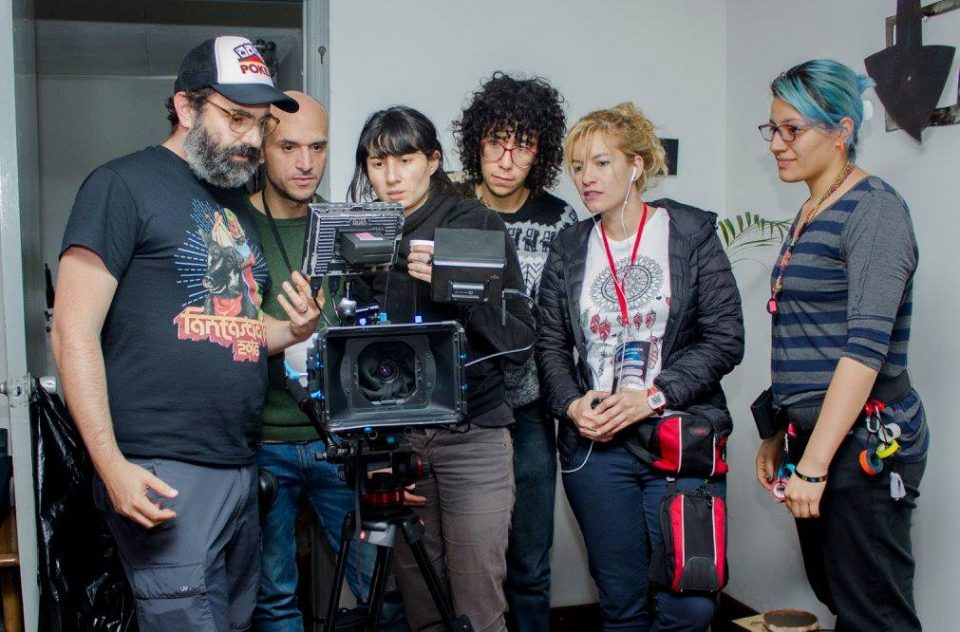
Natalia (centre) and her crew on set. Photo: Courtesy of Natalia Santa’s personal archive.
Most of the scenes were shot in real locations. The chess competitions shown in the movie were real tournaments with regular Lasker players. “These places are full of people and full of life,” she adds. “We wanted to recreate the real atmosphere.”
Shot mostly at night time over the course of five weeks, the films depicts a quieter almost peaceful version of Bogotá’s centre. Only the opening and closing scenes show the loud and busy day hours that most of us picture when we think about the area. Almost all the shots are done with a still camera with carefully crafted composition, the colour palette leans towards the pastel tones and the music score is minimalist, making the overall feel of the movie delicate and effectively touching.
Gonzalo de Sagarmínaga shines as Samuel, his face perfectly expressing the character’s beat and his pessimistic yet amusing personality. Sagarmínaga is a well known musician who’s been part of a number of rock bands including the iconic Hora Local. According to the director, “he was a revelation for us. When Gonzalo auditioned, we decided unanimously that he was the right guy. He had the right face and the right energy.” He also composed most of the tracks, including a ballad that was co-written by him, Santa and her husband Iván, who also served as the director of cinematography.
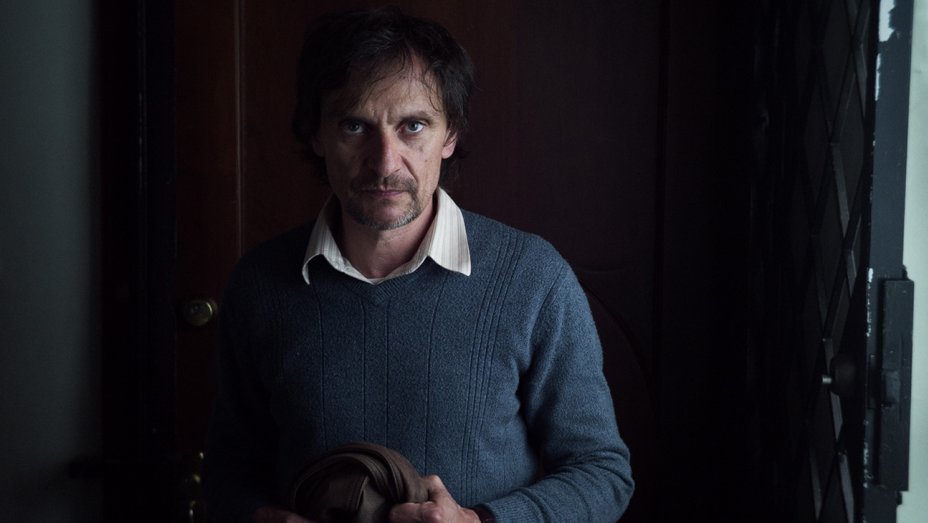
The moody expressions on the face of the protagonist perfectly convey his feeling throughout the film.
Santa started to work on the script six years ago and the process of making the film was anything but easy. “We were lucky enough to receive two grants from the FDC (Fondo de Desarrollo Cinematográfico), which basically allowed us to make the film,” she declares. In 2011, the project won a grant for screenplay writing and in 2014, a second grant for production, but the actual filming only started in 2016.
Her directorial debut entailed many sacrifices. She has a day job, of course. Having studied literature at the Universidad Nacional, she’s been working for over 15 years mostly as a scriptwriter for TV shows such as Sesame Street, and also as a script reader, selecting screenplays to be produced into series and telenovelas by the TV channel RCN.
She admits that there were times when the team wasn’t sure if they would ever finish the movie. “It can be quite a risky bet to make films. You don’t really know if you will get a return on your investment. The best you can hope for is not to lose money,” she notes. “We had to rethink the script in terms of making it financially viable, rethink locations and time frames. The budget became a straightjacket that forced us to edit all the non-essentials and actually helped us be more efficient and creative. Is the movie exactly as I imagined it would be? No. But the end result surprised me and that was quite beautiful.”
The struggles of the characters in La defensa del dragón could be seen as a sort of metaphor for Natalia Santa’s journey as a filmmaker. “In a way I wanted to express that taking risks can be worth it even if you see losing as the only possible outcome,” she concludes.

